Ijraset Journal For Research in Applied Science and Engineering Technology
- Home / Ijraset
- On This Page
- Abstract
- Introduction
- Conclusion
- References
- Copyright
Preparation and Evaluation of Polyherbal Hair Oil
Authors: Mr. Ghodke shubham Gorakhnath , Prof. Bagwan L. R., Dr. Hingane L. D.
DOI Link: https://doi.org/10.22214/ijraset.2021.39641
Certificate: View Certificate
Abstract
The various products to enhance beauty and elegance to look young and charming. Cosmetics thus play a vital role in human life. Now a days, herbal cosmetic are widely used because of the Belief that they have fewer side effects and better safety. Hair is one of the primary parts of the body which Acts as a protective appendage. The objective of the present work is to develop a hair oil for general purpose (daily use) using various herbs. The formulated oil was evaluated for its organoleptic properties, acid value, Saponification value, refractive index, pH etc. All the parameters were found to be good and within the Standards.
Introduction
I. INTRODUCTION
Hair is an epidermal derivative which is one of the vital parts increasing the overall Elegance of the body. Hair fall, dandruff, lice, spilt ends, grey hair are few problems involved with Hair faced by human1. To overcome these, human takes many measures by applying many Cosmetics for each. Hair oil is one among them used to solve almost all of these problems2.
Herbal cosmetics are in high demand due to the increasing interest of mankind towards Them because they are more effective with nil or less side effects, easily available ingredients etc. Hair care cosmetics are now added with herbs and they are well recognised compared with Synthetic ones3.
Herbal hair oil is more preferred and is used in many ailments of hair4. They promote Hair growth, improve elegance of hair and prevent hair fall5. Hair oil not only promotes hair Growth they also provide necessary moisture to the scalp rendering in beautiful hair6.
The present work was aimed to prepare and evaluate a polyherbal hair oil containing Herbs like curry leaves, bringaraj, amla, ficus, henna, hibiscus, vettiver, fenugreek in coconut Oil. All these herbs have well known traditional potential in the treatment of hair care.
II. COLLECTION OF PLANT MATERIALS
Polyherbal hair oil was prepared[7-13] by collecting various plant materials like ficus Root, curry leaves, bringaraj leaves, henna leaves, hibiscus leaves from herbal garden and vetiver Roots, methi seeds and amla fruits were procured from local market.
III. MATERIALS USED
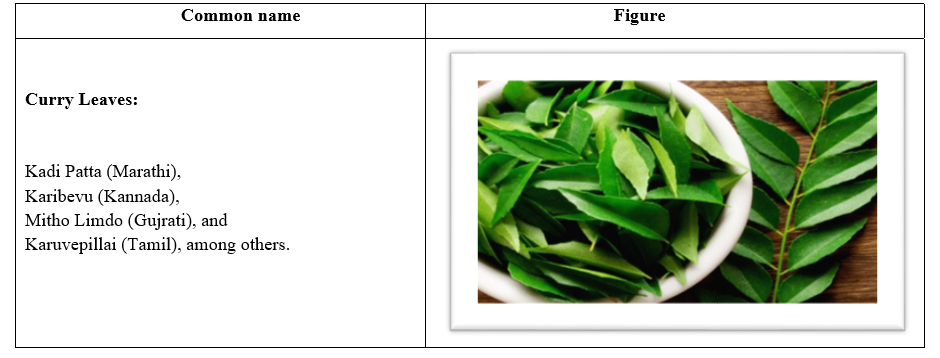
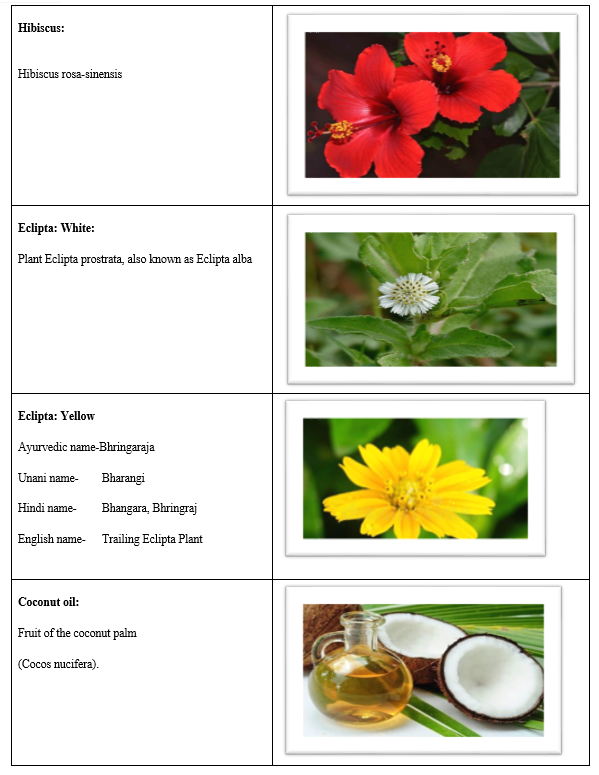
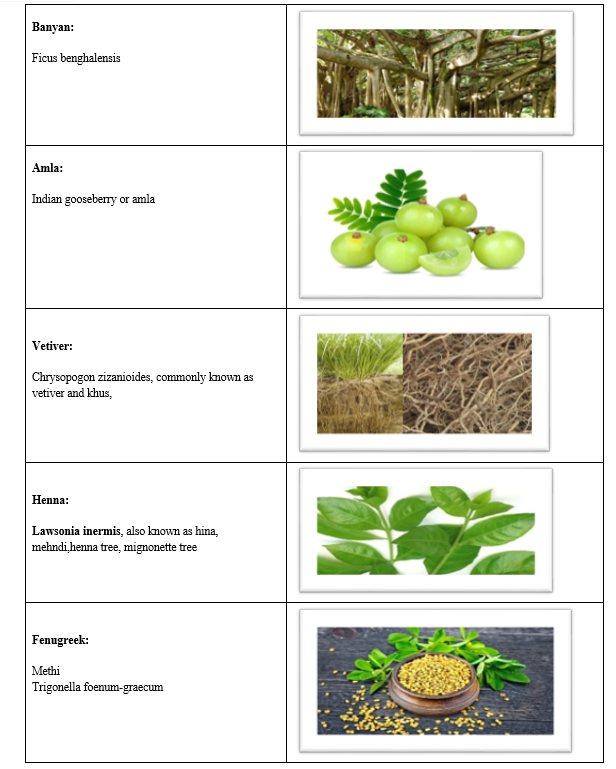
A. Curry Leaves
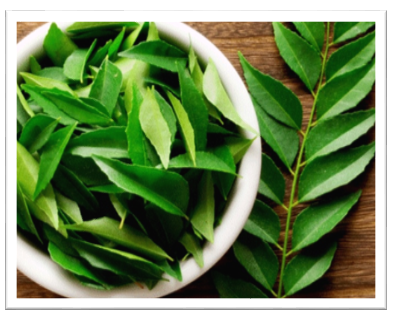
- Biological Source: Dried leaves of Murraya koenigii
- Family: Rutaceae
- Use: Prevents hairfall and premature greying of hair.
Other uses
Curry leaves are a rich source of vitamin A, vitamin B, vitamin C, vitamin B2, calcium, and iron, apart from a heavy distinctive odor and pungent taste.
It helps in the treatment of dysentery, diarrhea, diabetes, morning sickness, and nausea by adding curry leaves to your meals.
B. Hibiscus
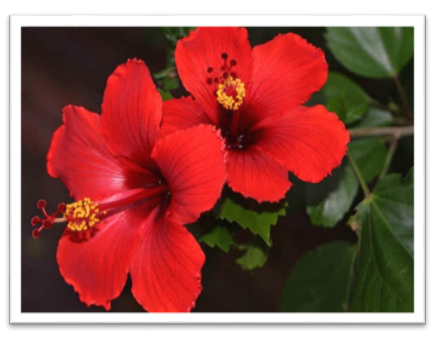
- Biological Source: Dried leaves of Hibiscus rosasinensis
- Family: Malvaceae
- Use: Nourishes and thickens hair.
- Scientific Name: Hibiscus sabdariffa L. Other names: Roselle.
The Hibiscus have alternate leaves, simple, ovate to lanceolate, often with serrated or lobed margin.
The flowers are long, conspicuous, trumpet-shaped, with five petals, in shades of white to pink, red, purple or yellow, of 4-15 cm size.
Hibiscus has been used by different cultures as a remedy for several conditions.
Egyptians used hibiscus tea to lower body temperature, treat heart and nerve diseases, and as a diuretic to increase urine production.
C. Eclipta: White
- Biological Source: Aerial parts of Eclipta prostrata/Eclipta alba
- Family: Asteraceae
- Use: Helps in boosting blood circulation to hair follicles
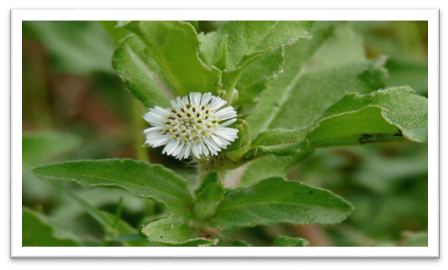
Eclipta prostrata commonly known as false daisy, yerba de tago, Gunta kalagaraku/Gunta galagaraku, Karisalankanni, and bhringraj, is a species of plant in the sunflower family.
This plant has cylindrical, grayish roots. The solitary flower heads are 6–8 mm (0.24–0.31 in) in diameter, with white florets. The achenes are compressed and narrowly winged.
The plant has traditional uses in Ayurveda.
It is bitter, hot, sharp, and dry in taste. In India, it is known as bhangra or bhringaraj.
Wedelia calendulacea is known by the same names, so the white-flowered E. alba is called white bhangra and the yellow-flowered W.
calendulacea is called yellow bhangra
D. Eclipta: Yellow
- Biological Source: Aerial parts of Widelia calendulaceae
- Family: Asteraceae
- Use: prevents greying of hair and hair loss.
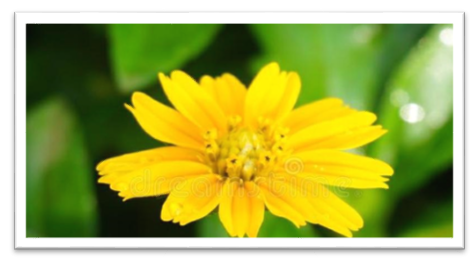
Eclipta prostrata belongs to a family of medicinal plants (Asteraceae) and plays a role in the treatment of several diseases, including infectious hepatitis, snake venom poisoning, gastritis, and respiratory diseases such as a cough and asthma.
Only the MTS-Eclipta prostrata group showed a statistically significant increase in hair density from 18 ea at 0 week to 19.43 at 10 weeks, hair line thickness, and frontal hairline distance changes.
The Eclipta prostrata group also showed a significant increase in hair thickness.
E. Coconut oil
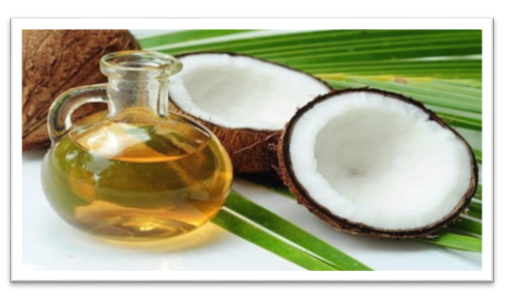
- Biological Source: Oil derived from dried fruits of Cocus nucifera.
- Family: Arecaceae
- Use: moisturiser, vehicle, stimulates hair growth by unclogging pores.
Coconut oil (or coconut butter) is an edible oil derived from the wick, meat, and milk of the coconut palm fruit.
[1] Coconut oil is a white solid fat, melting at warmer room temperatures of around 25 °C (78 °F), in warmer climates during the summer months it is a clear thin liquid oil. Unrefined varieties have a distinct coconut aroma.
[2] It is used as a food oil, and in industrial applications for cosmetics and detergent production.[1][2] Due to its high levels of saturated fat, numerous health authorities recommend limiting its consumption as a food.
F. Banyan

- Biological Source: Dried roots of Ficus benghalensis
- Family: Moraceae
- Use: strengthens hair, prevents hair loss
Ficus benghalensis is an Ayurveda plant for the treatment for wounds, skin diseases, eye diseases, leucorrhea, diabetes and diarrhea.
It is called Vata in Ayurveda.
The milky latex of Vata is applied directly over the wound and swelling for quick relief.
The decoction of the bark of Ficus benghalensis is given in a dose of 50-70 ml to treat vaginal diseases.
To control diabetes, the decoction of the bark of Vata or the fruit is given.
G. Amla

- Biological Source: Dried fruits of Phyllanthus emblica
- Family: Phyllanthaceae
- Use: hair conditioner, treats scalp ailments, promotes hair growth.
Amla is one of the most often used herb in Indian ayurveda.
It has a reputation as a powerful rejuvenating herb. The Amla fruit is reputed to have the highest content of vitamin C of any natural occurring substances in nature.
Organic amla is almost good for everyone on a regular basis.
Indian Research shows that 8.75 mg of natural vitamin C complex from Amla is equivalent to 100mg of the most commonly used synthetic vitamin C.
Amla prossesses the highest level of heat and storage stable vitamin C known to man.
Amla helps in maintaining proper health of hair. It makes them thick and soft.
Amla is a source of Vitamin-C whose deficiency can lead to hair loss and hair breakage.
Antioxidants prevent hair from premature aging and graying. Amla oil contains essential fatty acids that help in promoting hair growth. Head massage using amla oil increases blood circulation in the scalp thereby improving hair growth
H. Vetiver
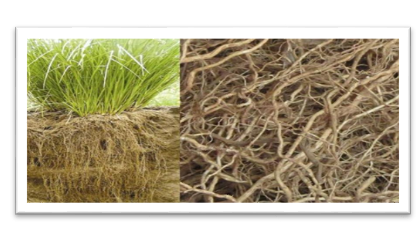
- Biological Source: Dried roots of Vetiveria zizanioides
- Family: Graminae/Poaceae
- Use: flavouring agent, nervine tonic.
Chrysopogon zizanioides, commonly known as vetiver and khus, is a perennial bunchgrass of the family Poaceae.
Vetiver is most closely related to Sorghum but shares many morphological characteristics with other fragrant grasses, such as lemongrass (Cymbopogon citratus)
Vetiver grass is grown for many purposes. The plant helps to stabilise soil and protects it against erosion, but it can also protect fields against pests and weeds.
Vetiver has favourable qualities for animal feed. From the roots, oil is extracted and used for cosmetics, aromatherapy, herbal skincare and ayurvedic soap.
I. Henna
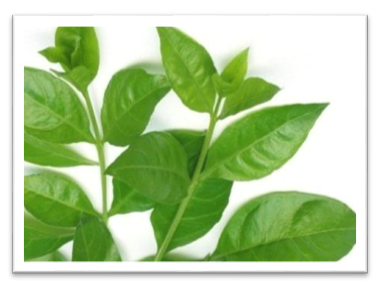
- Biological Source: Dried leaves of Lawsonia inermis
- Family: Lythraceae
- Use: hair colorant, helps in hair growth.
Henna is a dye prepared from the plant Lawsonia inermis, also known as the henna tree, the mignonette tree, and the Egyptian privet,
[1] the sole species of the genus Lawsonia.
Henna can also refer to the temporary body art resulting from the staining of the skin from the dyes.
After henna stains reach their peak color, they hold for a few days, then gradually wear off by way of exfoliation, typically within one to three weeks.
The name "henna" is used in other skin and hair dyes, such as black henna and neutral henna, neither of which is derived from the henna plant.
J. Fenugreek
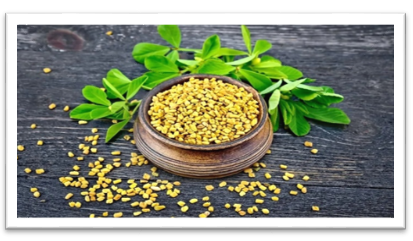
- Biological Source: Dried seeds of Trigonella foenum-graecum
- Family: Leguminosae
- Use: moisturises hair and replenishes hair growth.
Fenugreek is believed to have been brought into cultivation in the Near East. It is uncertain which wild strain of the genus Trigonella gave rise to domesticated fenugreek.
Fenugreek seeds naturally contain nutrients such as B vitamins, Vitamin C, and Beta Carotene — all of which support the optimal production of breast milk.
Research suggests that fenugreek seeds also help maintain blood sugar metabolism.
Fenugreek is used as a herb (dried or fresh leaves), spice (seeds), and vegetable (fresh leaves, sprouts, and microgreens). Sotolon is the chemical responsible for the distinctive maple syrup smell of fenugreek.
Table: 1: Formulation of Herbal Hair Oil
|
Ingredients |
Quantity % |
|
Murraya koenigii |
10 |
|
Hibiscus rosasinensis |
10 |
|
Eclipta alba |
5 |
|
Widelia calendulaceae |
5 |
|
Coconut oil |
40 |
|
Ficus benghalensis |
3 |
|
Phyllanthus emblica |
10 |
|
Vettiver zizanioides |
2 |
|
Lawsonia inermis |
10 |
|
Trigonella foenum-graecum |
5 |
All the herbs except vetiver were dried, powdered and mixed with coconut oil. They were
Boiled for half an hour and were filtered through muslin cloth. Vetiver was added towards the
End and stored for further use.
IV. EVALUATION OF HERBAL HAIR OIL
The formulated herbal oil was evaluated for parameters like pH, acid value, saponification Value, refractive index, viscosity and organoleptic parameters.
A. Acid Value
10ml of oil was added with 25ml of ethanol and 25ml of ether. Phenolphthalein was added
as indicator and titrated with 0.1M potassium hydroxide solution,
Acid value = 5.61n/w
Where,
n= Number of ml of 0.1M KOH
w= Weight of oil
B. Saponification Value
2g of oil was accurately weighed and transferred into a 250ml iodine flask. 25ml of 0.5M
alcoholic potassium hydroxide was added and boiled under reflux on a water bath for 30mins.
Phenolphthlein was added as indicator and titrated against 0.5M HCl (‘a’ ml). Similarly blank
was performed (‘b’ ml) without the sample.
Saponification Value: 28.05(b-a)/w
Where,
w= weight in grams of the solution.
C. pH
pH of the herbal oil was detected using pH meter.
D. Viscosity
Viscosity was determined using Ostwald’s viscometer.
E. Specific Gravity
Specific gravity of the prepared oil was determined using pyknometer or specific gravity bottle.
F. Refractive Index
It was determined using refractometer.
G. Organoleptic Property
Colour, odour, skin irritation was determined manually. Oil was applied on hand and exposed
To sunlight for 5mins to check for any irritation over skin.
V. RESULTS
The prepared polyherbal hair oil using the above mentioned ingredients was evaluated for the
Following parameters and the results are tabulated [Table: 2]
Table 2: Evaluation of Herbal Hair oil
|
Parameters |
Observation |
|
Colour |
Greenish brown |
|
Odour |
Characteristic |
|
Specific gravity |
0.9731 |
|
Viscosity |
0.9123 Poise |
|
pH |
6.4 |
|
Acid value |
2.1 |
|
Saponification value |
253 |
|
Irritation test |
No irritation |
|
Refractive index |
1.512 |
VI. FINAL PRODUCT

Conclusion
All the parameters showed that they are within the limits and since all the ingredients added have many advantages, this oil will help in maintaining good growth of hair, turning grey hair to black, protects from dandruff and results in lustrous looking hair.
References
[1] Ansari S.H. and Ali M. Hair care and herbal drug. Indian J Nat Prod. 13(1): 3-5, 1997. [2] Rathi V., Rathi J.C., Tamizharasi S. and Pathak A.K. Plants used for hair growth promotion: A review. Phcog Rev. 2(3): 165-167,2008 [3] Dixit V.K., Adhirajan N. and Gowri C. Development and evaluation of herbal formulations for hair growth. Indian Drugs. 38(11): 559-563, 2001. [4] Patni P., Varghese D., Balekar N. and Jain D.K. Formulation and evaluation of herbal hair oil for alopecia management. Planta Indica. 2(3): 27-30, 2006 [5] Adirajan N., Ravikumar T., Shanmugasundaram N. and Babu M. In vivo and in vitro evaluation of hair growth potential of Hibiscus rosasinensis Linn. J Ethanpharm. 88: 235-239, 2003 [6] Purwal, L., Gupta, S. B. N. and Pande, M.S. Development and Evaluation of Herbal Formulations for hair growth, E- Journal of Chemisrty, Jan 2008, Vol-5, NO-1, 34-38. [7] Bhatia SC. Perfumes, soaps, detergents and cosmetics. 2nd edn. New Delhi. CBS Publishers and distributors; 2001; 639, 641. [8] Mithal BM, Shah RN. A hand book of cosmetics. 1st edn. New Delhi. Vallabh prakashan; 2000; 141-142. [9] Kirtikar K.P. and Basu B.D., Indian Medicinal Plants, Vol I, International Book Distributors, Dehradun, 1995, 768-769. [10] Shah C S, Qudry J S, A Text book of Pharmacognosy,11th Edn., B.S. Shah Prakashan, Ahmedabad, 1996; 119. [11] Evans W C, Trease and Evans. Pharmacognosy, 15th Ed., W.B. Saunders Harcourt Publishers Ltd., 2002; 292. [12] The Aurvedic Formulary of India, Government of India, Ministry of Health and family planning, Department of health, Delhi, 1st ed .1978; part 1, 99. [13] N. Sanju, N. Arun and K. K. Roop, Cosmetic Technology, 1st Edition, Birla Publications Pvt. Ltd, Delhi (2006) pp. 379-382. [14] Adhirajan, N., Dixit, V. K.and Chandrakasan, G., Development and Evaluation of Herbal Formulations for Hair growth, Indian Drugs, Nov-2001, 38 (11), 559-563. [15] Roy, R. K., Thakur, M., Dixit, V. K., Development and Evaluation of polyherbal formulation for hair growth- promoting activity, Journal of Cosmetic Dermatology, Nov-2006, 6, 108-112.
Copyright
Copyright © 2022 Mr. Ghodke shubham Gorakhnath , Prof. Bagwan L. R., Dr. Hingane L. D.. This is an open access article distributed under the Creative Commons Attribution License, which permits unrestricted use, distribution, and reproduction in any medium, provided the original work is properly cited.

Download Paper
Paper Id : IJRASET39641
Publish Date : 2021-12-26
ISSN : 2321-9653
Publisher Name : IJRASET
DOI Link : Click Here
 Submit Paper Online
Submit Paper Online

